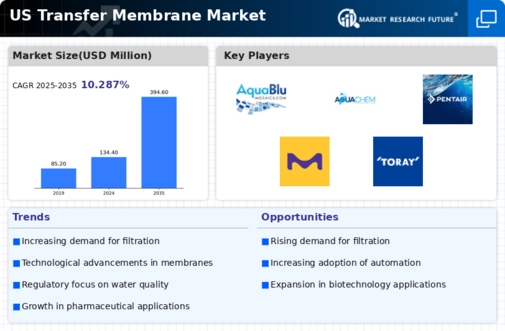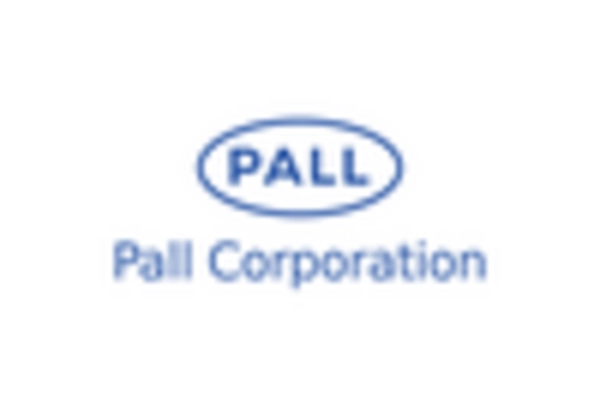Rising Demand in Biotechnology
The transfer membrane market is experiencing a notable surge in demand driven by the The transfer membrane market is experiencing a notable surge in demand driven by the biotechnology sector. Biopharmaceutical companies increasingly rely on advanced filtration techniques for protein purification and analysis. Consequently, the need for high-quality transfer membranes has escalated. In 2025, the biotechnology industry in the US is projected to reach approximately $200 billion, indicating a robust growth trajectory. This growth is likely to propel the transfer membrane market, as these membranes are essential for various applications, including Western blotting and nucleic acid transfer. The increasing focus on research and development in biotechnology suggests that the transfer membrane market will continue to expand, catering to the evolving needs of this dynamic sector.
Increased Focus on Quality Control
Quality control remains a critical aspect of manufacturing processes across various industries, thereby driving the transfer membrane market. As companies strive to meet rigorous quality standards, the use of transfer membranes for analytical testing and validation is becoming more prevalent. In sectors such as food and beverage, pharmaceuticals, and biotechnology, the need for reliable testing methods is paramount. The US quality control market is anticipated to grow significantly, with an emphasis on ensuring product safety and compliance. This trend suggests that the transfer membrane market will benefit from the heightened focus on quality assurance, as these membranes play a vital role in maintaining high standards.
Growth in Pharmaceutical Applications
The pharmaceutical industry is a significant driver of the transfer membrane market, as these membranes are crucial for drug formulation and quality control processes. With the US pharmaceutical market expected to exceed $600 billion by 2025, the demand for efficient separation and purification techniques is paramount. Transfer membranes facilitate the analysis of drug compounds, ensuring compliance with stringent regulatory standards. As pharmaceutical companies invest in innovative drug delivery systems, the reliance on transfer membranes for accurate testing and validation is likely to increase. This trend indicates a promising outlook for the transfer membrane market, as it aligns with the industry's commitment to enhancing product quality and safety.
Emergence of Advanced Filtration Technologies
The transfer membrane market is being significantly influenced by the emergence of advanced filtration technologies. Innovations in membrane materials and designs are enhancing the efficiency and effectiveness of separation processes. For instance, the introduction of nanofiber membranes and hybrid materials is improving the performance of transfer membranes in various applications. As industries seek to optimize their processes, the demand for these advanced membranes is likely to rise. The market for filtration technologies in the US is projected to grow at a CAGR of around 7% through 2025, suggesting a favorable environment for the transfer membrane market. This growth is indicative of the increasing need for high-performance membranes across diverse sectors.
Expansion of Research and Development Activities
The transfer membrane market is likely to benefit from the ongoing expansion of research and development activities across various scientific fields. Increased funding for research initiatives in biotechnology, pharmaceuticals, and environmental sciences is driving the demand for innovative separation technologies. As academic and industrial laboratories seek to enhance their analytical capabilities, the reliance on transfer membranes for applications such as protein analysis and nucleic acid transfer is expected to grow. The US research and development expenditure is projected to reach approximately $600 billion by 2025, indicating a robust investment landscape. This growth in R&D activities suggests a promising future for the transfer membrane market, as it aligns with the increasing need for advanced analytical tools.

















Leave a Comment